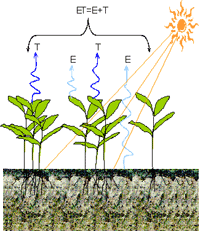Agricultural Research Division of IANR
Date of this Version
2010
Citation
The Professional Animal Scientist 26 ( 2010 ):527–533
Abstract
Experiments evaluated estrus synchronization and periconceptual supplementation on pregnancy rate and calf production. Approximately one-half of heifers in 2 pastures (yr 1) or 4 pastures (yr 2) were injected with prostaglandin F2α (PGF; n = 1,182) or not (NPGF; n = 1,208) 5 d after fertile bulls were introduced for 25 d. In yr 2, a total of 1,230 heifers were randomly assigned to 1 of 4 pastures; 2 received a supplement providing 100 g/d of Ca propionate (1.4 kg/d, 20% CP) 2 d before through 19 d after bull exposure and 2 did not in a 25-d breeding season.
Pregnancy rate was reduced (P < 0.01) in the PGF-synchronized heifers relative to the NPGF heifers (73.7 vs. 78.3% for PGF and NPGF, respectively. Approximately 10% more (P < 0.01) PGF-synchronized heifers that became pregnant calved in the first 21 d. Subsequently, weaning weight and the value of steer calves from PGF dams tended to be greater (P < 0.10) than those of steer calves from NPGF dams. Supplemented heifers were heavier (P < 0.05) at pregnancy diagnosis; however, pregnancy rate was unaffected (P > 0.10). Calf birth weight was greater (P < 0.05) for calves from dams receiving the Ca propionate supplement, but weaning weight and calf value were similar (P > 0.10). In this study, injection of PGF in a 25-d breeding season improved synchrony of calving and increased steer calf weaning weight and value; however, supplemental nutrition during the periconceptual period was of limited value.



Comments
Copyright 2010 American Registry of Professional Animal Scientists